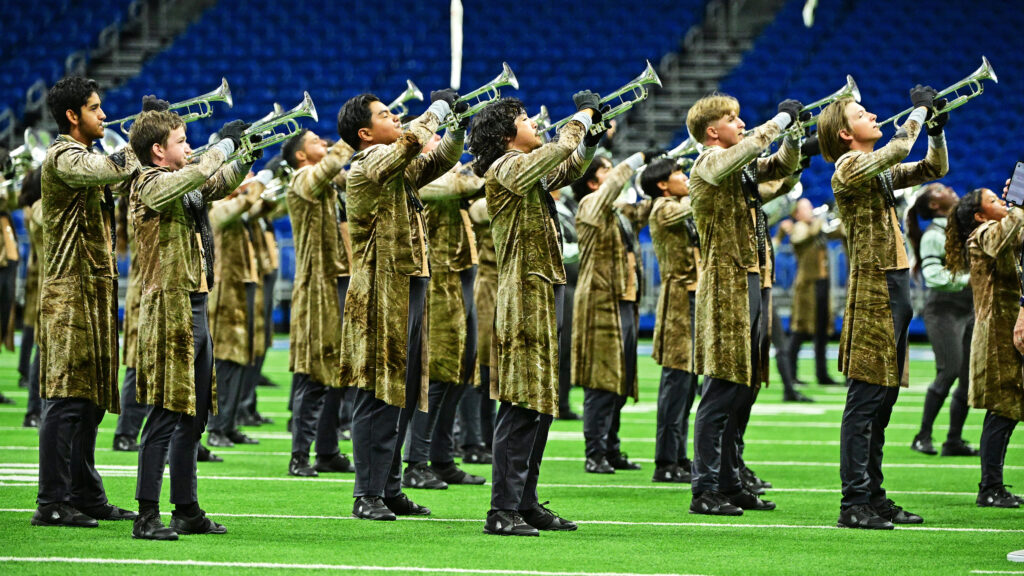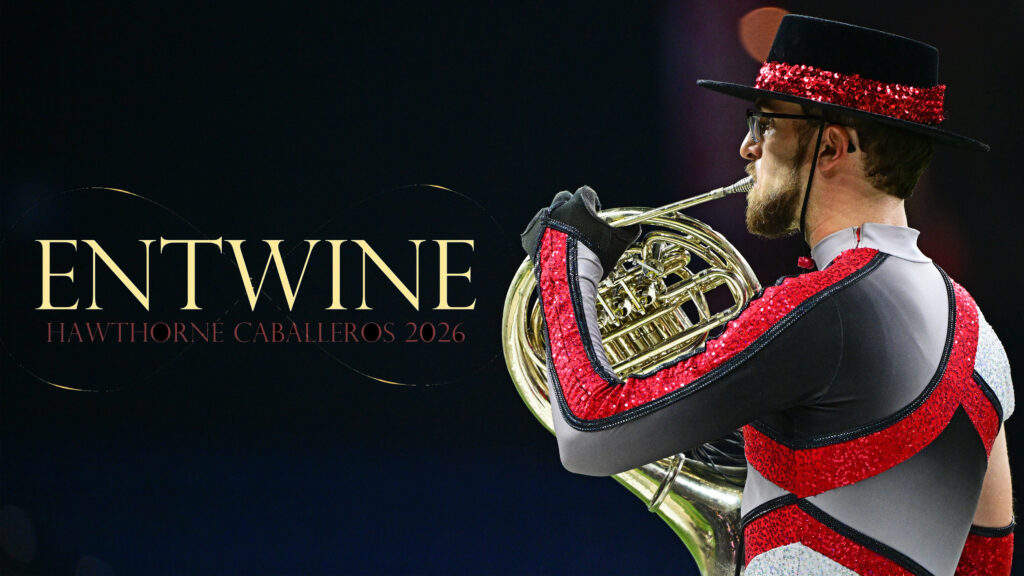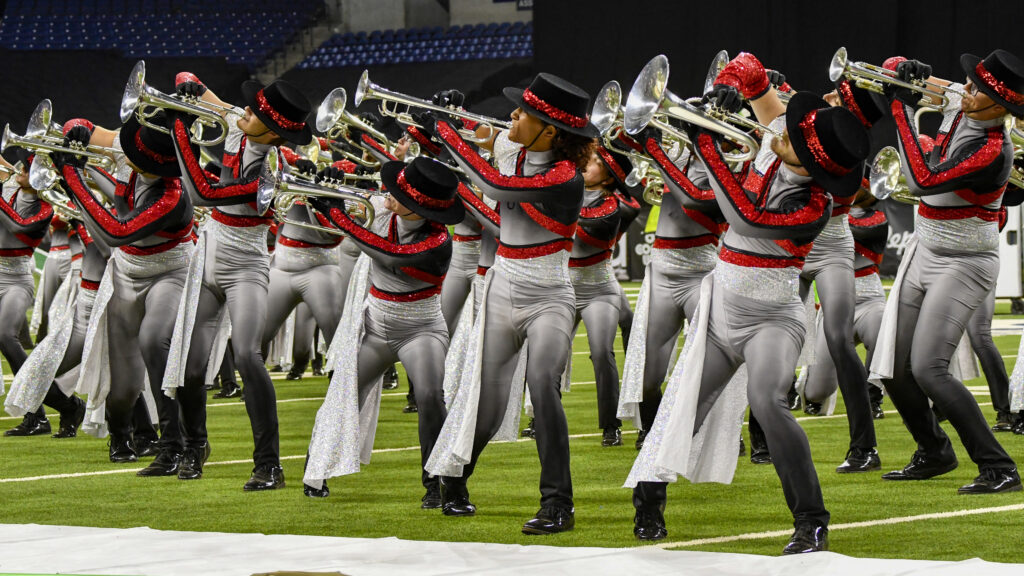During the 2010 Drum Corps International Tour, the eventual 12th-place Glassmen won all 15 meetings with the 13th-place Colts. The Academy finished in 14th, followed by Troopers, who had placed in Finals the year before for the first time since 1986.
Spirit and Crossmen grabbed the last two spots in the Semifinals competition, 2010 being the last year that only 17 corps advanced. Starting in 2011, Open Class corps would join the mix, giving 25 corps the opportunity to perform during the second night of World Championship competition.
In 18th place, Diamond Bar, California’s Pacific Crest scored within 0.45 of a point of advancing into the Semifinals after fighting hard for such a position all season. Pacific finished above the 19th-place Mandarins in all 18 shows in which the two cross-state rivals met.

Pacific Crest’s “Maze” was set to four tableaus about experiencing and dealing with the twists and turns of modern life, titled, “We’re off! This is Going to be Easy!,” “Traps and Walls,” “No Way Out,” and “We Made It.”
Much of the fun throughout the show was looking for the pathways through which the performers continually navigated. Some of the paths led to openings and others led to dead ends, with barriers formed by close drill intervals and a variety of color guard equipment and streamers.
“We’re off! This is Going to be Easy!” was set to “Machu Picchu: City in the Sky,” a 2004 wind ensemble piece written by Satoshi Yagisawa. Machu Picchu is an Incan city built in the 1400s almost 8,000 feet above sea level atop a Peruvian mountain. Yagisawa’s piece portrays the city at its apex of development, ending with “the re-emergence of Incan glory as the City in the Sky again reached for the sun.”
Prior to the first note of the dramatic fanfare, a lone color guard member ran through a pathway created by the stationary performers. Throughout the opener, small segments of brass players somewhere were rotating to close off some pathways and open up others.
“Traps and Walls” was set to John Mackey’s 2009 “Asphalt Cocktail.” According to the composer, the work is “designed to shout, ‘We’re here.’ It aims to capture the grit and aggression that I associate with the time I lived in New York. Picture the scariest NYC taxi ride you can imagine, with the cab skidding around turns as trucks bear down from all sides.”
During this work, the corps kept forming dead ends and barriers that others couldn’t push through, concluding with a single brass player running through a pathway and getting trapped within another drill formation.

Coming up next, the corps played the first half of “No Way Out” to the backfield. It was a tender ballad set to “Sam’s Gone” from the James Newton Howard score to Francis Lawrence’s 2007 science fiction post-apocalyptic horror film, “I Am Legend.”
The color guard utilized lengths of yellow ropes in this segment to create ever-changing barriers, forming organic constructions that seemed to grow out of the bodies. The ropes united as a single length when the corps turned around to deliver the loud, emotionally-charged climax. The piece ended with the corps facing backfield, marking a collective exhalation as a tender mellophone solo wrapped up the music.
Pacific Crest’s final “We Made It” segment was set to John Mackey’s 2006 wind ensemble work, “Turbine.” The composer wrote the piece to deal with his fear of flying, capturing the sense of jet engines building intensity as they race down a runway.
The closer turned optimistic as deep pink flags with a jagged yellow stripe brightened the day. A performers with a single flag of identical design, but with reversed colors, ran down the 50-yard line from the back of the field and got caught inside a rotating box of brass players prior to breaking free. That flag then appeared in front of a double advancing company front formed by the brass section, now clear of all obstructions.
The flag soloist took a few final heroic spins, then threw the flag on the ground before running off, emphasizing the act of having survived the mazes and coming out free and clear on the other side of the barriers.
She then ran off the field through a pathway formed by two arcs of the remaining flag spinners who had collapsed to the ground at the end of the show, perhaps in exhaustion from having fought the maze throughout the entire production.

Michael Boo was a member of the Cavaliers from 1975-1977. He has written about the drum corps activity for more than a quarter century and serves as a staff writer for various Drum Corps International projects. Boo has written for numerous other publications and has published an honors-winning book on the history of figure skating. As an accomplished composer, Boo holds a bachelor's degree in music education and a master's degree in music theory and composition. He resides in Chesterton, Indiana.





